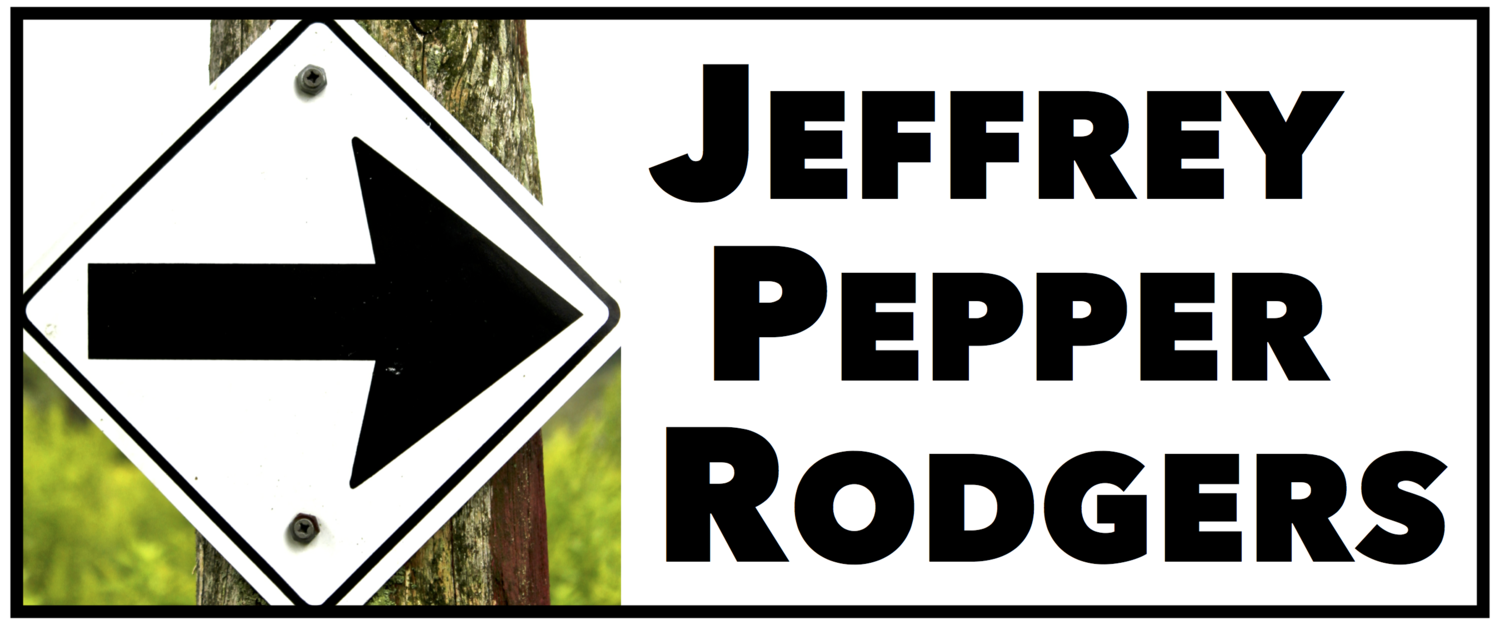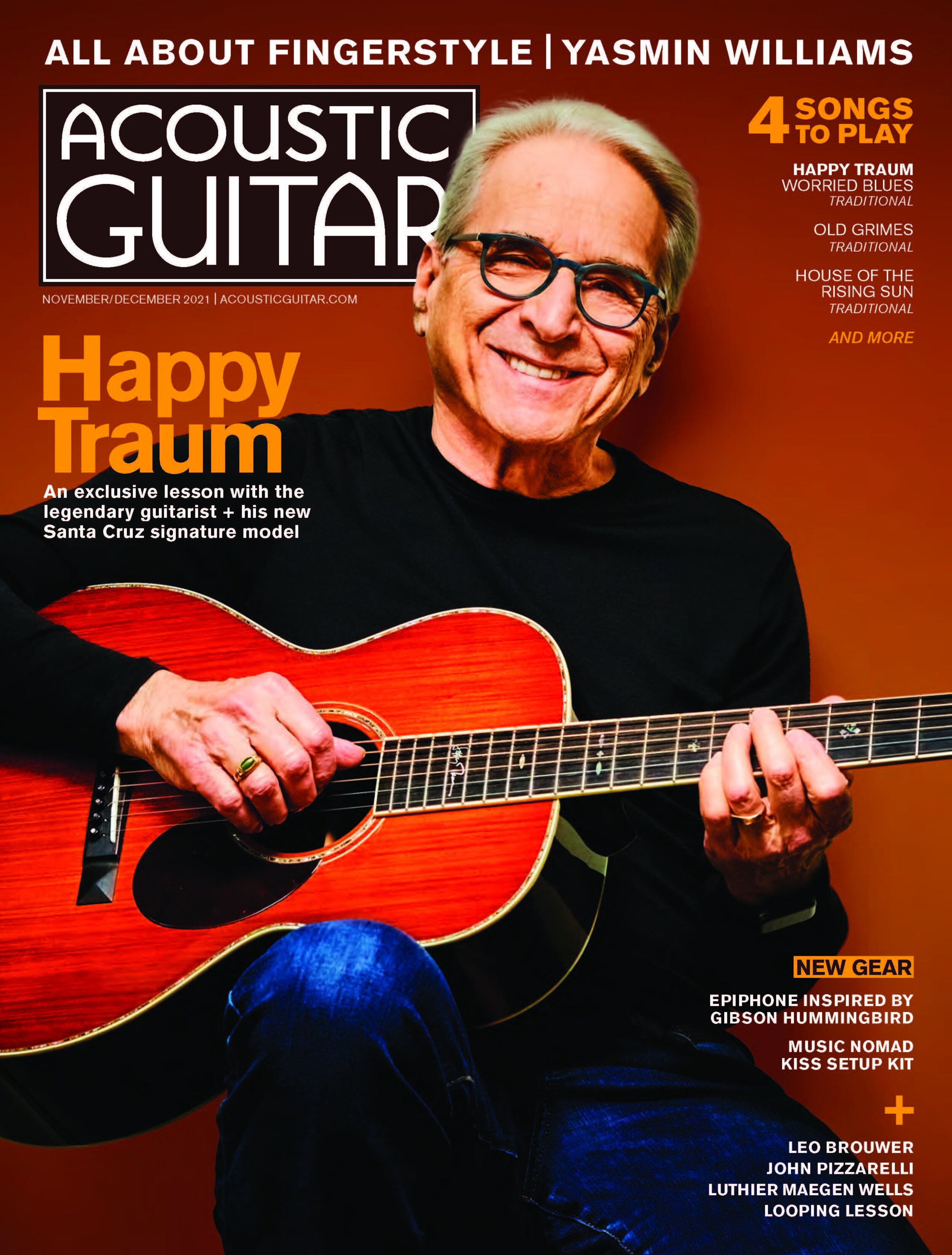Happy Traum interview and guitar lesson
In 1954, when Happy Traum was an art student at New York City’s High School of Music and Art, some classmates invited him to go see a Pete Seeger concert. At 16, Traum was not really familiar with Seeger or active in music, but he tagged along—and was stunned by what he discovered.
“The whole idea of hearing somebody on a stage by himself, with an instrument, was the antithesis of the pop music I was listening to on the radio, where you couldn’t do that yourself,” Traum recalls. “Here was a guy who told us, pretty much, ‘You could do this too. You just stand here and play some chords and sing songs.’ And Pete was singing about peace and freedom and civil rights—that was something I felt but didn’t know you could express. It just blew open my head. I had to go get a guitar and start learning how to play.”
After that encounter with the legendary folksinger, Traum not only devoted himself to the guitar, but he also embraced Seeger’s lifelong mission to help others make music themselves. So along with embarking on a career as a performer, Traum became a guitar teacher—and he ultimately made a signal contribution to modern music instruction by starting Homespun Tapes with his wife, Jane, in 1967. From reel-to-reels to cassettes, VHS tapes, DVDs, and online video, Homespun has released some 700 lessons by many luminaries of American roots music—including Tony Rice, Norman Blake, Jorma Kaukonen, Chris Thile, Jerry Douglas, and Seeger himself, with a video version of his pioneering book How to Play the Five-String Banjo.
On a balmy summer afternoon, I visit Happy in Woodstock, New York, at the house he and Jane began building in 1970 in an old farm field, living in a tent with their kids for a few months during the construction. More than 50 years later, Happy remains a pillar of the Woodstock music scene, alongside friends and collaborators such as John Sebastian, Larry Campbell, and Cindy Cashdollar.
“It’s still a thriving music community,” Traum says. “I feel like an elder statesman in a funny way.”
I’ve known Traum since the beginning of Acoustic Guitar, interviewed him multiple times, and worked with him on my own Homespun video series teaching acoustic arrangements of Grateful Dead songs. Whether he is teaching in a workshop, in print, or on screen, I am always struck by his gift for breaking complex technique into clear steps, with a low-key, encouraging manner that makes the whole process accessible and fun.
At 83, Traum is remarkably youthful—still playing concerts and teaching at music camps like Richard Thompson’s Frets and Refrains and Jorma Kaukonen’s Fur Peace Ranch in addition to his ongoing work with Homespun. Never caught up in the music business rat race, Traum always seems genuinely to play music, as suggested by the title of his most recent album, Just for the Love of It. And he is still creating content for Homespun, such as a new lesson on Woody Guthrie songs, as well as nearing completion of another solo album.
Sitting in his sunroom with his Santa Cruz HT/13, a brand new signature model with a gorgeous redwood top and tone to match, Traum shares a few stories and songs from across the years. What follows is a retrospective of Traum’s life in music as captured by six songs. In the video above, watch Traum himself play the music transcribed below—and, of course, offer tips on how to play it yourself.
Find the full interview and lesson in the November/December 2021 print or digital issue of Acoustic Guitar.
Also included in the issue is a transcription of this performance of “Worried Blues,” which Traum learned from a recording by Hally Wood. Read the full article.
Here are the songs covered (as heard in the companion Spotify playlist):
Good Morning Blues (Brownie McGhee)
Blowing in the Wind (with the New World Singers)
I Shall Be Released (with Bob Dylan)
Mississippi John (not on Spotify)
Golden Bird
The Water Is Wide
Worried Blues

